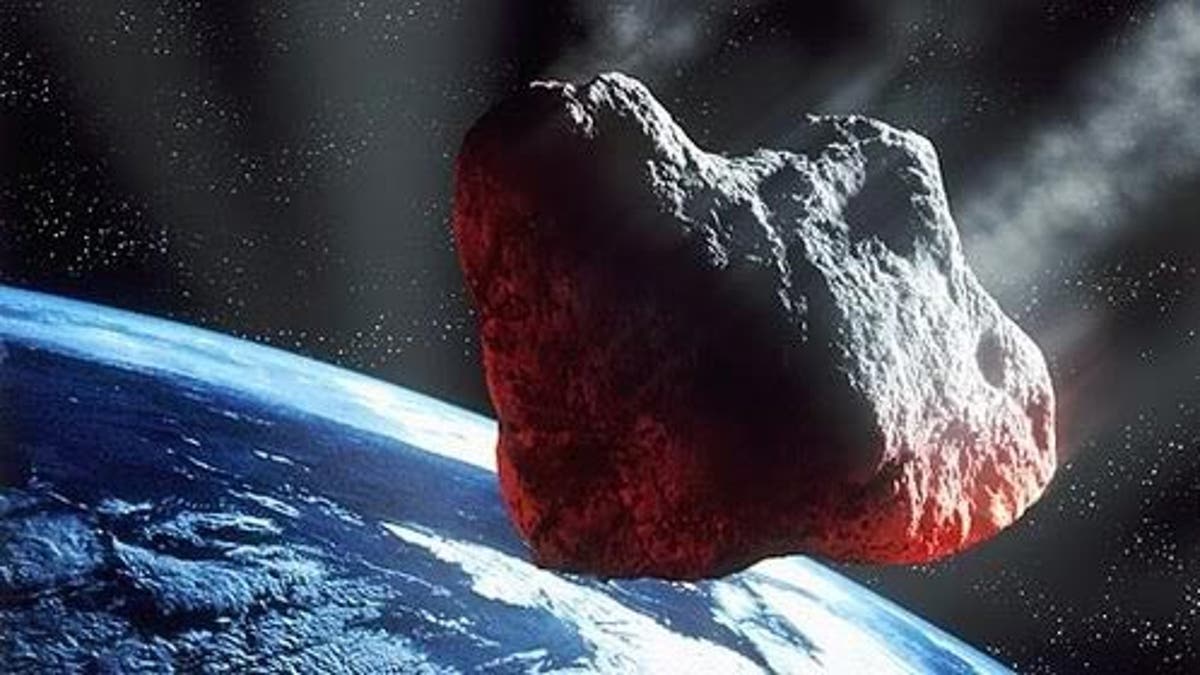
File image - an artist's illustration of a large asteroid. (ESA)
A huge asteroid is set to fly past Earth at more than 30,000 mph on Tuesday.
Near Earth Object 2013 MD8 is between 126 feet and 282 feet long, according to NASA. The space rock will pass Earth at 12:55 p.m. EST at a speed of 30,418 mph, it said, in a statement.
However, there is no need to worry about the asteroid, which will pass our planet at 15.1 lunar distances, which is around 3 million miles away. Each lunar distance is 238,900 miles.
NASA EYES GIANT 'METEORITE' CRATER BENEATH GREENLAND’S ICE
In 2017, a skyscraper-sized asteroid named 2010 NY65 flew past Earth at about eight times the distance between Earth and the Moon. The Moon is an average of 238,855 miles away from the Earth.
In 2016, NASA opened a new office to track asteroids and comets that come too close to Earth. The Planetary Defense Coordination Office (PDCO) formalized the agency’s prior program for detecting and tracking near-Earth Objects, known as NEOs.
A small chunk of an asteroid or comet is also known as a meteoroid. When it enters Earth's atmosphere, it becomes a meteor or fireball or shooting star. The pieces of rock that hit the ground, valuable to collectors, are meteorites.
ASTEROIDS HAVE BEEN CRUSHING EARTH FOR NEARLY 300 MILLION YEARS AND NO ONE KNOWS WHY
A recent study revealed that, over the last 290 million years, asteroids have been slamming Earth at triple their previous rate. Scientists, however, are unsure why.
NASA recently spotted a giant crater beneath Greenland’s ice that may be the result of a massive meteorite smashing into the Earth.
The crater, which is just over 22 miles wide and buried under more than a mile of ice, would be one of the largest meteorite impact sites on Earth if it is proved to be the result of a space rock.
CLICK HERE TO GET THE FOX NEWS APP
If the newly-discovered crater is indeed the result of a meteorite, it would be 22nd-largest impact crater found on Earth, according to NASA.
Fox’ News Chris Ciaccia contributed to this article. Follow James Rogers on Twitter @jamesjrogers
